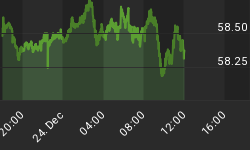The New York Times was not delivered at my home this morning for the first time in memory.
Not a single IPO (initial public offering) came to market in January, not one.
Spending by Japanese wage-earner households in Japan fell 6.1% from November and 3.5% from a year ago. Spending in Japan fell to its lowest level since January, 1982.
Of 79 US banks that reported, 11.1% reported tighter home mortgage standards, up from 10% last month. The past two polls revealed the first signs of tighter mortgage credit "in over a decade."
So what does all the above mean? Who the hell knows, but I thought they might be hints of things to come.
Well, the Dow ended January down 3.45%, the S&P down 2.74% and the Nasdaq down 1.09%. The all-encompassing Wilshire 5000 ended down 2.61%. So does this guarantee that the year 2003 will be down? Nothing is guaranteed where the market is concerned -- except that stocks run a long cycle from overvaluation to undervaluation. In case you didn't know it, we're still in the area of overvaluation.
In a bear market people need income. In fact, I've been stressing the need for income for years. Wall Street, ever sensitive to the people's wants, is on the job. As note the full page ad now being run by Prudential Financial. The ad runs,
Two Words for Today's Stock Investor: "Quarterly Dividends."
Ah yes, the only problem is that to pay out dividends you have to be making money. And as the bear market moves along that going to be an increasingly difficult thing to do.
Turning to page MW6 in today's Barron's I note the "European Trader" column entitled, "Goodbye to All That. Markets hit a six year low on war worries."
One of the dopey parts of this business is that the newspapers always claim to know why the market did this or that. If the market is up today it's because Prez Bush smiled. If it's down the next day it's because there was a fire on Wall Street.
How does the European Trader know that Euro market hit a six year low because of "war worries"? Euro markets have been declining for months and months. In a bear market, stocks go down, obviously not every day, but in general the trend is down and stocks go with the trend. So I get tired of the numbskull "reasons" why stocks go up or down. But I guess if you're a newspaper reporter, you have to write something, and since most of the time you don't know what's going on, you simply dream up obvious reasons. It's moronic, but that's the way it is.
I explained in yesterday's piece that Lowry's just gave a "sell signal" based on the 25 points rise in the Selling Pressure Index from its January 13 low -- this together with the collapse in the Buying Power Index to a 5 1/2 year low.
Following such "sell signals" the market usually rallies for a few days before resuming its downtrend. Which is where we are now, in the rally phase.
Both the 200-day MA of the Dow and the 50-day MA of the Dow are now in declining trends. The Dow is rallying from below its 50-day MA. Once the Dow and the market turn down from this position, the decline can be really nasty. I look for some brutal downside action coming up. In fact, I look for some panic action somewhere during the months of February and March.
The really nasty action may not come until the Dow breaks below its October low, and by the way I do believe that breaking the October lows is only a matter of time.
For last week, the true (common stocks only) advance-decline ratio was -- Jan. 27 minus 3.39; Jan. 28 minus 3.09; Jan. 29 minus 2.94; Jan. 30 minus 3.34; Jan. 31 minus 2.88.
January ended with the S&P selling at 28.49 times trailing reported earnings along with a dividend yield of 1.89%. If you think those statistics are indicative of a bear market bottom, you haven't been in this business long enough. The bitter truth is that those statistics are what you might expect at a big bull market top.
That's the story as January 2003 goes into the history books.
I just heard of the tragic explosion of the Columbia space ship. I'm sorry, but I can't help thinking that this is another bad omen. Why did that have to happen now? A ghastly tragedy.
















